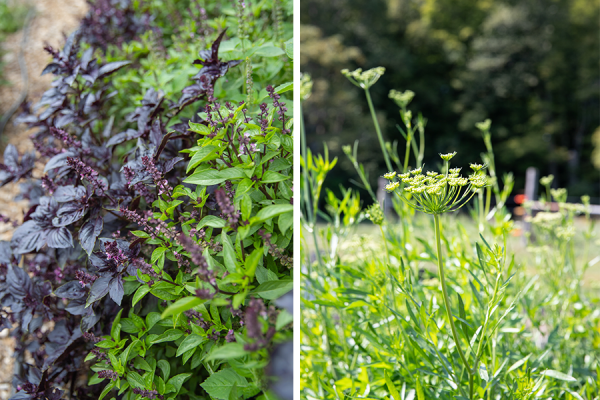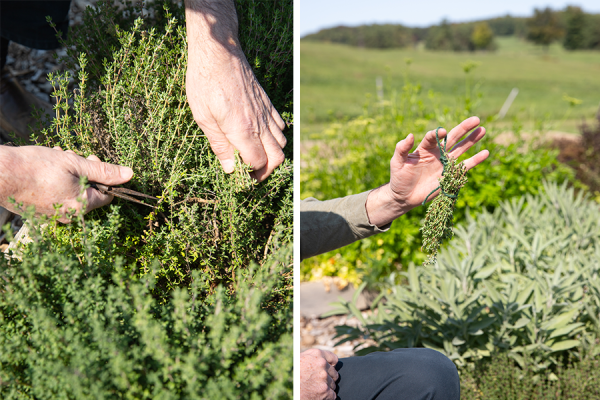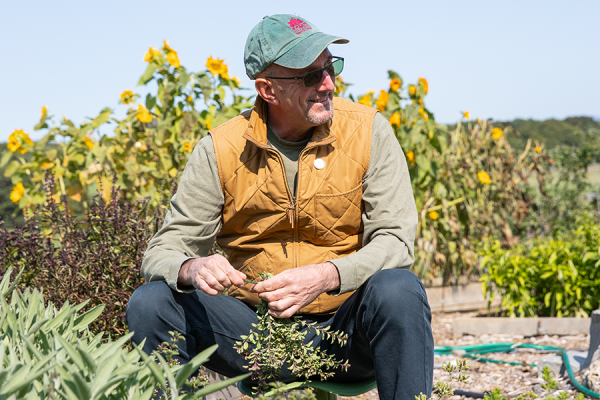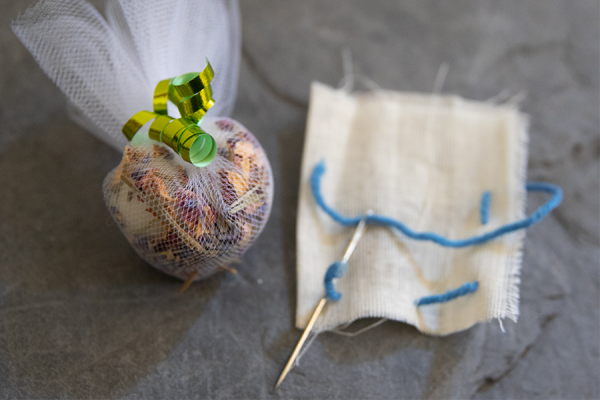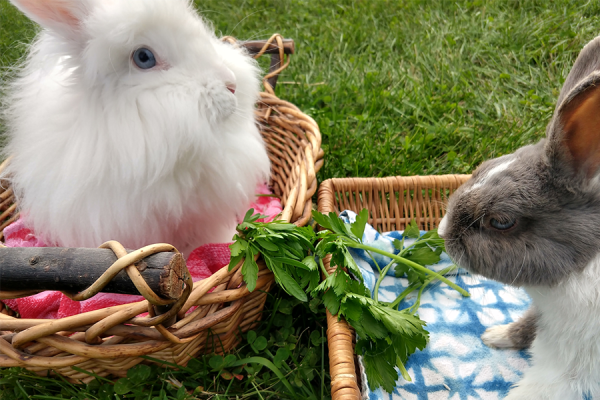Hi,
I find after harvesting herbs such as thyme, oregano and mint, I wash thoroughly, and lay them on to of a clean towel, then I cover them with another light towel or paper towel. They dry quickly and stay free of dust.They are then ready to store for the winter or for gifts.
Harvesting & Drying Herbs in the Education Gardens
Now that it is officially autumn and the cold nights can damage delicate plants growing outdoors, we're harvesting lots of herbs in the garden (and loving all of their wonderful smells while we’re at it!). Here's how we harvest and dry the herbs in our Education Gardens, and ideas to put them to good use all winter long.
Harvesting Herbs
Every spring, we plant herbs and vegetables in our education gardens at Shelburne Farms. The goal of our education gardens is to connect folks to where their food comes from by engaging in the love and care that goes into garden maintenance and harvesting alongside our educators and farmers. We grew several kinds of annual herbs. Annual herbs need to be replanted every year. We grew cilantro, parsley, and many different colors and sizes of basil.
It’s best to harvest your annual herbs before the first frost. Cut the stems from the base of the plant. Remember: these herbs won’t grow back, and will need to be replanted next spring. So don’t be shy, just snip away!
Did you know that some herbs can be planted once, and they’ll grow back every spring? These types of plants are called perennials. Perennial herbs include oregano, thyme, and sage. With a little care in the fall and spring, these herbs will regrow and rebloom every year in your garden.
Preparing for the Cold
To prepare your perennial herbs for the winter, trim off any dead, woody stems with clippers. This is a good time to gather some helpers and remove any weeds that may be around your plants. Cut, clip, or pinch off the dead flower heads from the plants. Or try this fun experiment: Let some of the herbs and flowers go to seed. The wind may carry the seeds to new spots. See where these plant “volunteers” show up in the spring.
Drying Your Herbs
Fresh herbs are tasty additions to your favorite meals. Try adding them into salads or your favorite baked treats. Harvested more fresh herbs than you can use up? You can dry them to be used all winter long.
(Want to dry your own herbs and don’t have a supply of fresh herbs from your own garden to dry? Not a problem! You can simply buy fresh herbs and follow the same process.)
An easy way to dry your herbs is by hanging small bundles to air-dry. Tie a piece of string around a bundle and hang with a push pin. Tips for drying your herbs (and reduce chances of mold) from educator Michael Minchak:
- Choose a warm, dry place to hang your herbs while they dry.
- Keep your bundles small to increase air flow.
Ideas for Using Your Dried Herbs
Now that we have our dried herbs, what’s next? Carefully remove the dried leaves from the stems and store in an airtight container. These can now be used just like the herbs you’d buy at the store.
Of course, dried herbs can be used in cooking! Make a spice blend of your favorite kinds and add it to your favorite bread recipe or any dish that needs a little pinch of flavor. Make tea bags and enjoy your plants as a warm beverage as the temperatures cool. Your dried herbs can be added into homemade candles for garden aromas all year long. Gather some herbs inside a piece of fabric or tulle, tie it up with a decorative string, and place them anywhere you want to smell your garden.
And now that you’re done harvesting and preparing your dried herbs, spend some time thinking about what herbs to grow next spring! Or better yet, think of more ways you can enjoy growing fresh herbs all winter long (let us know what you find!).
Animals like garden herbs, too! Here are the Children’s Farmyard rabbits, Willow and Earl, enjoying some parsley. Leafy green vegetables are an important part of a rabbit’s diet.
